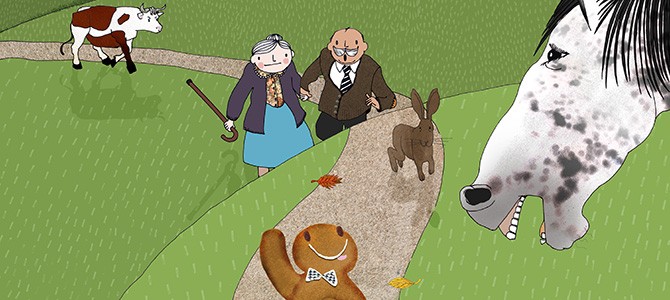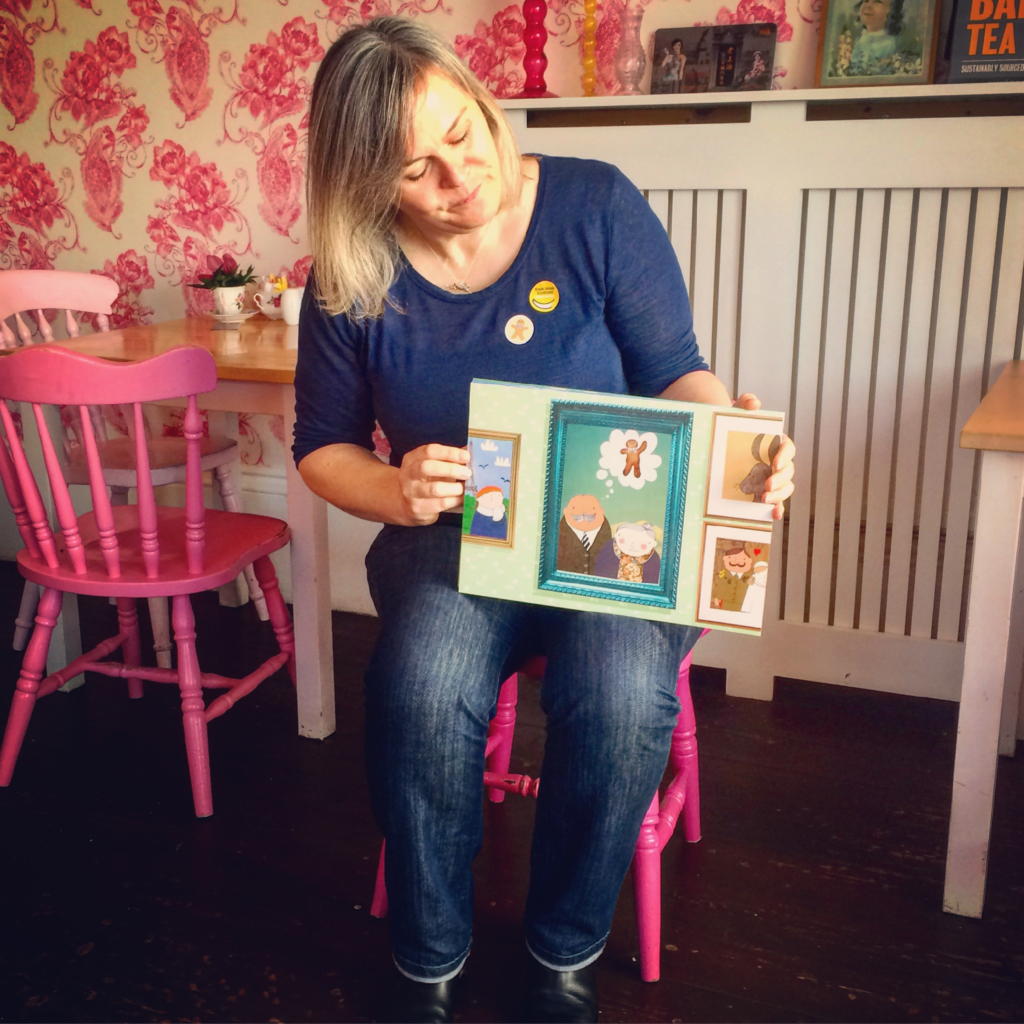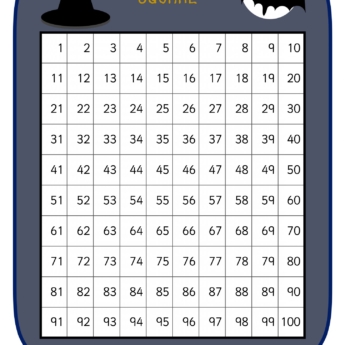I’m very excited to introduce the first guest post on the blog. I met Wendy Duncan through the Indie Roller group. She is so enthusiastic about kamishibai, the magical art of Japanese story telling. What is Kamishibai? Have a read below to find out more.
The Sidlaw Hare

Hi, I’m Wendy and I make kamishibai.
I’m an early years teacher and have been working in the the early years for 27 years. I have worked as a nanny, a pre-school leader, a team leader in a prep school, a nursery manager and as a TEFL instructor in Japan.
It was when I was working as a TEFL instructor on the amazing subtropical island of Okinawa in Japan that I discovered kamishibai. I used to drive around on my scooter visiting nursery schools with my bag bursting full of flash cards, books and props. I would sing, dance, play games and read stories to large groups of children to help them learn english.
On one of my visits to a nursery school I saw kamishibai being used. The teacher was using these large cards with illustrations and I thought it looked like a great way to tell stories to a group of children. Her audience were captivated.
When I came back to the UK I started work in a Family Centre. This is when I remembered the kamishibai and thought how much easier it would make story time. I searched for kamishibai in the UK but couldn’t find any. This is how I came to make kamishibai. The translation of kamishibai is paper theatre.

My first two stories are rewrites of classics which I have written using repetition and rhyme. In ‘The Gingerbread Man’ I have squeezed in a few silly made up words which are very popular with the children. I am currently working on my next story which is an original story by me.
There are many reasons why I think the kamishibai format is so good for using with groups of children. The size is an obvious factor. Having large illustrations makes sharing the story so much more manageable with a large group of children as it’s much easier for everyone to see. The next major factor is that the text of the story is on the back of the cards. This means that you don’t have to try and read the story whilst holding the book up for everyone to see or attempt to read upside down!
This shows the back of one of the pages. You can see the text of the story, a smaller version of the illustration, directions to help when to pull out the page/turn the page and questions to help extend the learning from the story. The kamishibai is held by my frame/butai.
Traditionally kamishibai are used with a butai, which is the ‘stage’. The stages were attached to bicycles and the kamishibai men would cycle around telling stories and selling sweets to make money. By using a stage/frame to hold the kamishibai the story teller is free to use sign language or Makaton. You could also use props or musical instruments. This is a huge benefit when using kamishibai with a frame. If your hands are free you can enhance the story telling experience and use whatever extra resources you need for your cohort. This helps you to provide inclusive learning in your classroom. You can watch my short introduction to kamishibai video here.
I have had the pleasure of carrying out story telling sessions in schools where some pupils had additional needs. One school requested I used Makaton while reading my Gingerbread Man kamishibai. The teachers were amazed by how engaged one pupil in particular was. I was delighted that some of his classmates were signing along with me. In another school I was using some of my props where one of the pupils was blind. His teaching support asked if he could hold some of the props as I told the story.
These experiences and my many years in the sector have given me lots of ideas about perfecting story time and your own story telling technique. I offer teacher training workshops covering these areas and I am currently working on a story telling workshop which will be open to anyone who would like to attend. I will share my top story telling tips and techniques and introduce new ideas to help enhance your experience and that of your children.
For more information please visit Wendy’s site and sign up for the Hare Herald Newsletter. There’s a special offer on at the moment, when you sign up you can get free postage!
If you have any questions or would like more information please email: wendy@thesidlawhare.co.uk or find The Sidlaw Hare on Facebook, Instagram, Twitter or Pinterest.
Thank you Wendy for sharing kamishibai with us.
Michelle


